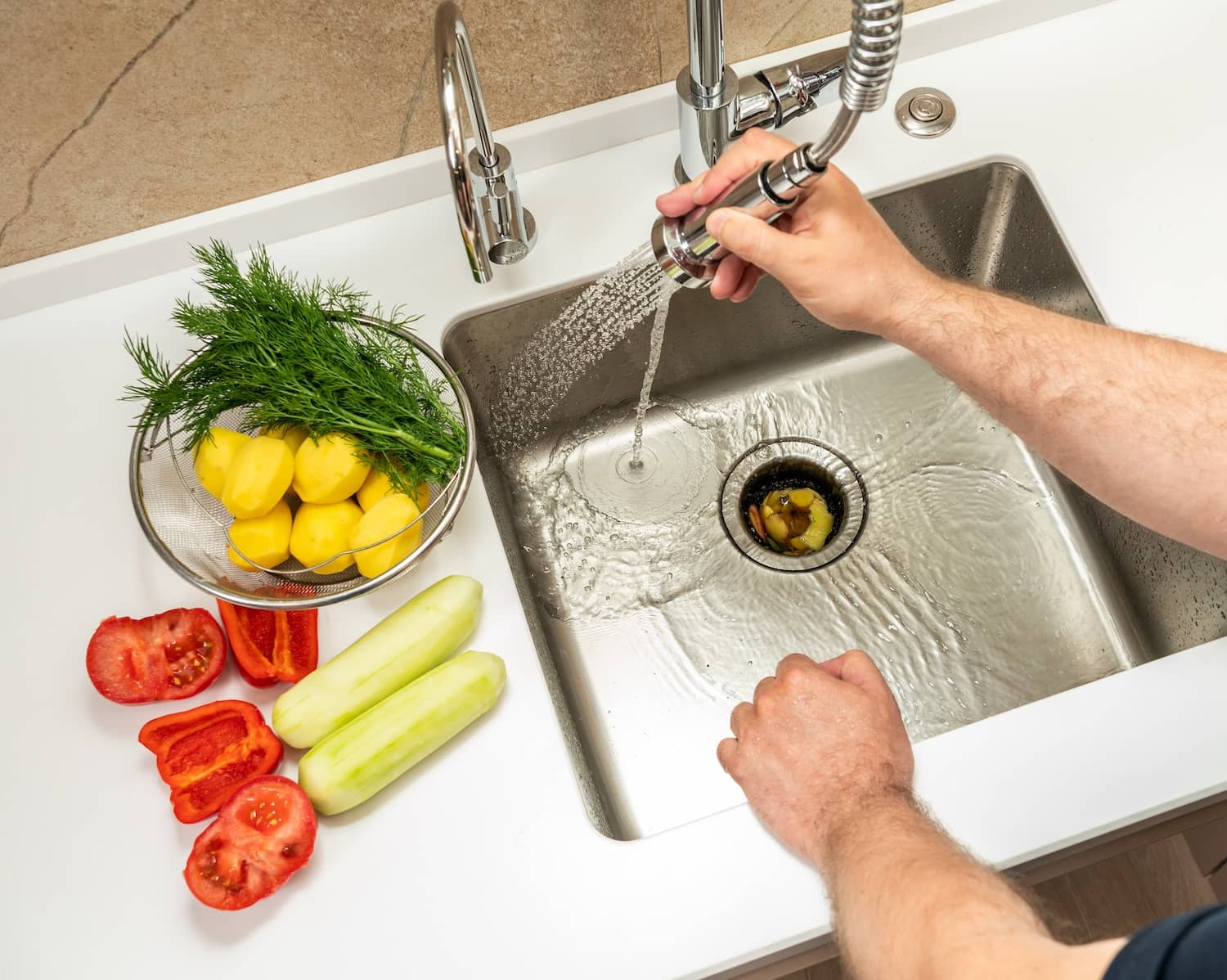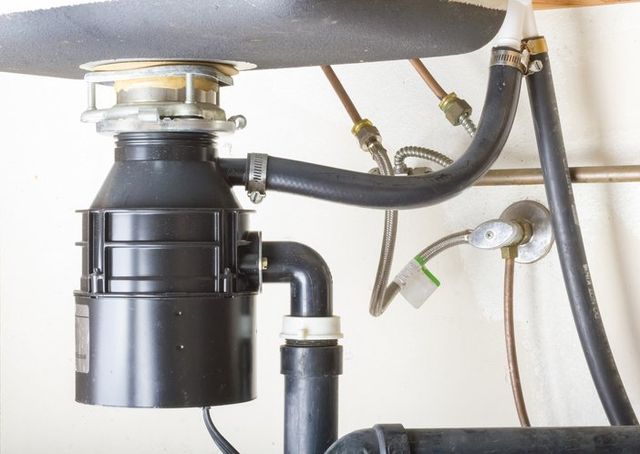Quick Solutions for Fixing a Dripping Waste Disposal Unit
Quick Solutions for Fixing a Dripping Waste Disposal Unit
Blog Article
This great article following next relating to The Handy Guide To Fixing Your Garbage Disposal Leaking is exceptionally fascinating. Read it for yourself and see what you think of it.

Waste disposal unit are important kitchen area home appliances that aid in dealing with food waste efficiently. Nonetheless, a dripping garbage disposal can be a discouraging and messy issue to handle. Thankfully, numerous leakages can be dealt with easily with a few basic steps. In this write-up, we will certainly talk about exactly how to take care of a dripping waste disposal unit effectively.
Intro
Waste disposal unit are mounted under cooking area sinks and are developed to shred food waste into smaller sized items, enabling it to go through the pipes system easily. While these devices are usually dependable, leakages can take place gradually as a result of deterioration, loosened connections, or damages to the device.
Step-by-Step Guide to Repairing a Dripping Garbage Disposal
Turn Off the Power
Prior to attempting any type of fixings, ensure that the power to the garbage disposal system is switched off to avoid the risk of electrical shock.
Situate the Leakage
Determine the precise place of the leakage and determine the reason
Tighten up Links
Utilize a wrench to tighten up any type of loose links in between the disposal unit and the pipes system.
Change Seals or Gaskets
If the leakage is because of worn seals or gaskets, eliminate the old parts and change them with new ones.
Patching Fractures or Holes
For splits or holes in the disposal device, use epoxy or an ideal patching product to secure the broken location.
Recognizing the Resource of the Leakage
Before trying to fix a dripping waste disposal unit, it is important to recognize the source of the leak. This can typically be done via aesthetic examination or by carrying out straightforward examinations.
Visual Evaluation
Check the garbage disposal unit thoroughly for any signs of water leakage. Pay very close attention to areas around seals, gaskets, and connection points.
Testing for Leakages
One means to evaluate for leaks is by running water via the disposal system and looking for any visible indications of leakage.
Usual Reasons For Leaks in Rubbish Disposals
Worn Seals and Gaskets
Seals and gaskets play a crucial duty in avoiding water from leaking out of the waste disposal unit. Over time, these components can weaken, resulting in leaks around the disposal device.
Loose Connections
The links in between the garbage disposal and the pipes system can end up being loosened in time, causing water to leakage out throughout operation.
Splits or Openings in the Disposal Device
Physical damages to the garbage disposal, such as fractures or holes in the housing, can likewise lead to leaks.
Tools and Products Needed for Taking Care Of a Dripping Waste Disposal Unit
Before beginning the repair work procedure, gather the essential tools and materials, consisting of a screwdriver, flexible wrench, plumbing technician's putty, replacement seals or gaskets, and epoxy or patching material for repairing splits or openings.
Checking the Waste Disposal Unit After Fixing
When the repair is total, check the waste disposal unit by running water via it to guarantee that the leakage has been resolved.
Preventive Upkeep Tips to Avoid Future Leakages
To stop future leaks, it is vital to execute regular upkeep on your waste disposal unit. This includes keeping it tidy, avoiding placing non-food products or hard things down the disposal, and occasionally checking for leaks or other problems.
Conclusion
To conclude, repairing a leaking garbage disposal is a reasonably simple process click here that can be completed with fundamental devices and products. By complying with the steps outlined in this post and practicing preventive maintenance, you can keep your garbage disposal in good working condition and prevent pricey repair work in the future.
What to Do About a Leaking Garbage Disposal
A leaking garbage disposal often goes unnoticed until you confront a sopping cabinet, a foul-smelling puddle, or an audible drip-drip-drip from the unit. The fix can be frustrating, too, because the leak can stem from a number of components in the system. Fortunately, with a little sleuthing, you can zero in on the leak and—depending on the exact location—stop the icky oozing and repair the component that caused it. Worst case scenario, if it turns out that the garbage disposal must be replaced, installing a new one is a reasonable do-it-yourself task for those with basic plumbing skills. Read on to keep the cash you’d otherwise hand over to a pro.
Prepare to find the leak
Prior to testing the garbage disposal for leaks, unplug it at the wall outlet and turn off the power from the breaker box to prevent electrical shock. Then insert a watertight sink stopper into your sink drain and wipe the unit dry with a clean cloth. In any handy container, mix a few drops of food coloring into a few cups of water, and pour the dyed water onto the sink stopper to help you locate the leak.
Investigate the source
the top, where the disposal meets the sink drain the side, where the dishwasher hose or main drain pipe connects to the disposal or the bottom of the unit Inspect each of these locations while gliding a light-colored rag over the unit; the dyed water will readily show on the rag and reveal the location of the leak. If a leak isn’t immediately apparent, remove the sink stopper and pour a few more cups of dyed water down the sink drain, then check for leaks again. Leaks near the top of the unit are more likely to show themselves while the sink is plugged, while side and bottom leaks are more noticeable while the sink is unplugged.
The metal sink flange that sits directly inside the sink drain is typically sealed around the top with plumber’s putty (a clay-like sealant) and then secured from under the sink with bolts. If the plumber’s putty deteriorates, or the bolts loosen, the flange can no longer form a watertight seal between the sink drain and the disposal—which could cause a leak at the top of the unit.
To reseal the leaky flange, you must first detach the garbage disposal. Start by loosening the screws securing the main drain pipe to the disposal, then loosen the screws in the metal clamp securing the dishwasher hose to the disposal and detach the drain pipe and dishwasher hose from the disposal. Loosen the screws in the mounting ring that connects the disposal to the metal mounting assembly beneath the sink, then pull down the disposal and carefully set it on a clean, dry surface. Loosen the bolts in the mounting assembly with a wrench, then pull down the mounting assembly and set it near the disposal.

As a passionate reader on How to fix a pretty consistent leak from my garbage disposal, I was thinking sharing that piece was beneficial. Please set aside a second to distribute this article if you enjoyed it. Many thanks for your time. Visit us again soon.
Click Here Report this page